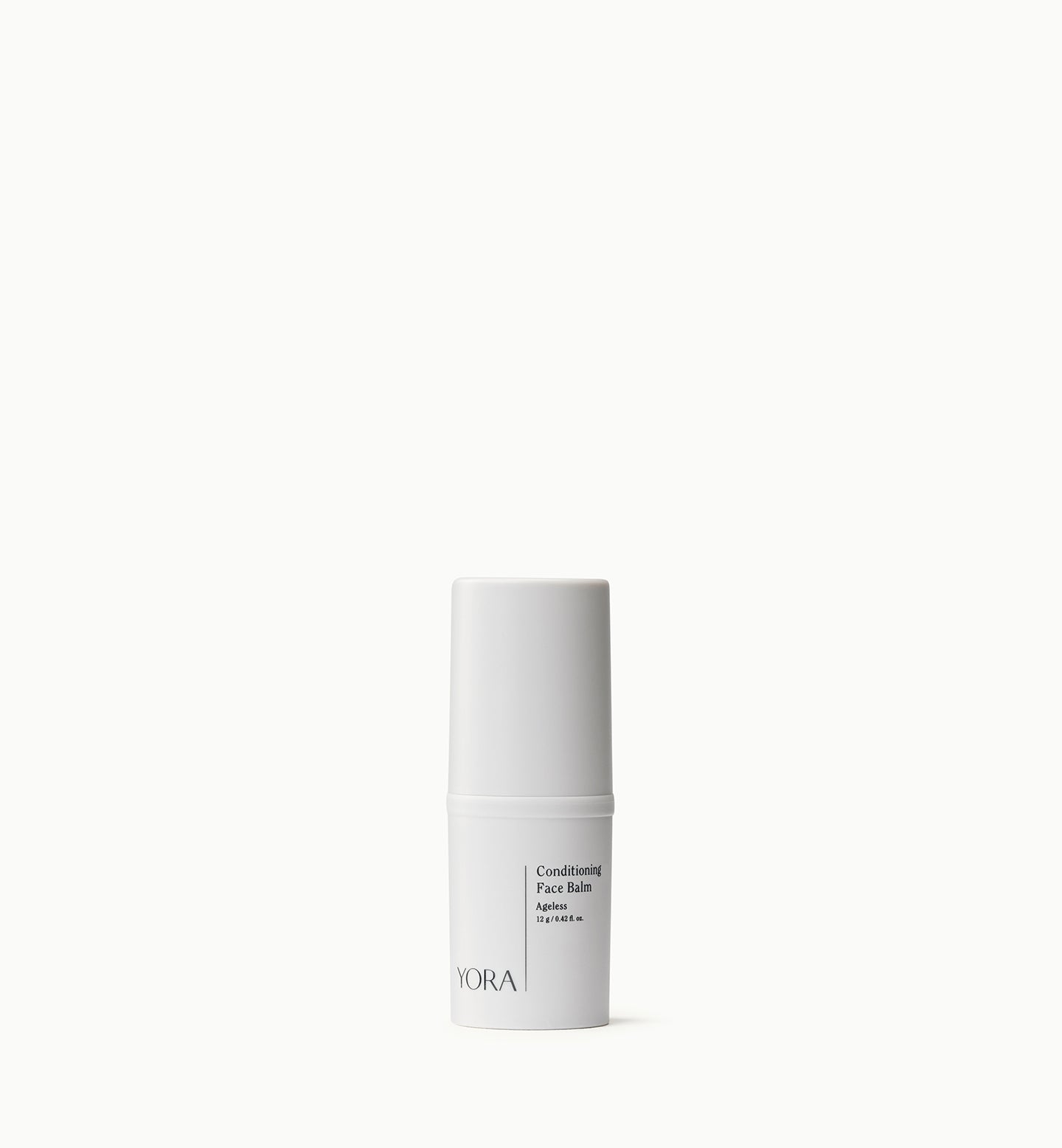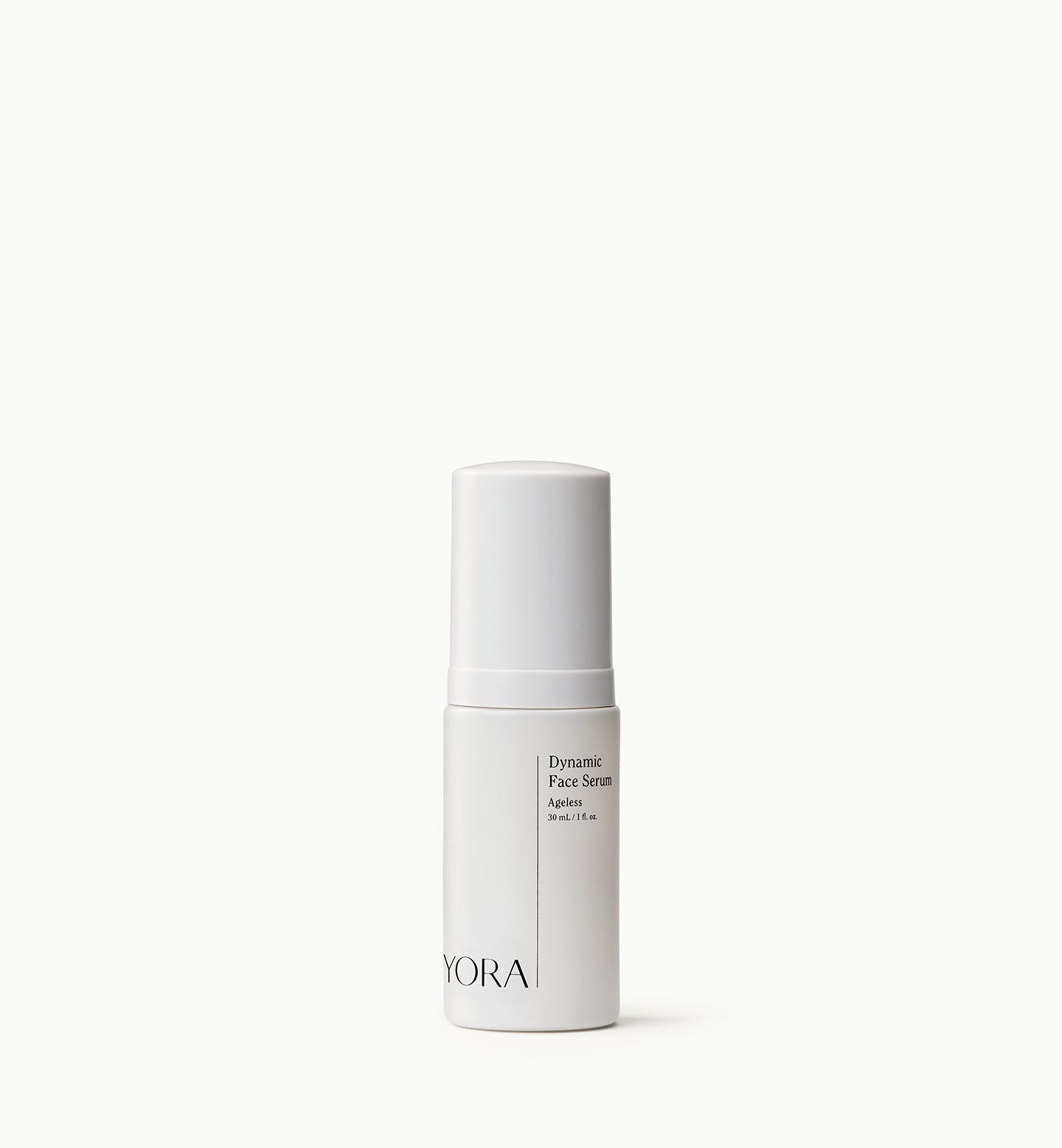The food you eat can impact how rapidly your skin ages. For instance, a diet that's high in sugar or fried food can inhibit the production of collagen, resulting in loose, dimpled skin.
Certain foods contribute to what's known as glycation and it can significantly impact your well-being. In this article, we'll break down the glycation process, how it affects your skin (plus the rest of your body), and what you can do to make more wholistic choices to keep yourself healthy inside and out.
What Is Glycation?
Glycation takes place when sugars such as glucose and fructose form non-enzymatic bonds with nucleic acids, proteins, and lipids. This cross-linking produces glycotoxins called advanced glycation end products, or AGEs. The absence of enzymes in the glycation process makes it impossible for your body to properly fold and transport these modified proteins. (Glycosylation is your body's ability to form an enzymatic bond between sugars with proteins.)
The glycation process can begin as soon as early adulthood, with rates varying by individual according to diet. When AGE receptors (or RAGEs) accumulate a significant amount of AGEs over time, it can result in tissue damage, vascular endothelial cell damage in your blood cells, and inflammation in vital organs such as your lungs or kidneys.
While sugar molecules contribute to the development of AGEs, they're not the lone cause. Food preparation also plays an important role in the formation of AGEs. The process of browning or blackening food is what's known as the Maillard Reaction, and it's responsible for producing favorable flavors and smells. But a 2010 article from the Journal of the American Dietetic Association found food prepared through dry heat such as frying, grilling, or roasting contains a high level of AGEs called carboxymethyllysines (CMLs).
Aside from dietary AGEs, UV irradiation — a 2016 study based out of Seoul, South Korea discovered a link between RAGEs and increased melanin production — and tobacco smoke are other risk factors associated with the formation of AGEs.
How Glycation Impacts the Skin
During the glycation process, glucose and fructose link to amino acids in your skin's two key proteins, collagen and elastin. These proteins reside in the extracellular matrix, which binds cells and tissues together. Collagen maintains your skin's smoothness and elasticity while elastin allows your skin to return to its regular form after being stretched or contracted.
The damage from the glycation process on collagen and elastin fibers can neither be reversed nor repaired. Proteins that are inundated with AGEs lose their ability to properly function with surrounding cells and other proteins, resulting in sagging, wrinkled skin.
Moreover, nonenzymatic glycation can induce oxidative stress, which is an imbalance of cell-damaging free radicals and the antioxidants that can fight them off. This can lead to further cell damage in the form of lipid peroxidation — an attack on lipids by free radicals.
How Glycation Impacts the Body
Glycation is most often associated with diabetes mellitus (or simply diabetes). This disease is defined by hyperglycemia or high blood sugar brought upon by a deficiency of insulin (a hormone that transports glucose to cells). There are several types:
- Type 1 diabetes: Often diagnosed during childhood or adolescence, refers to when the pancreas can't create insulin.
- Type 2 diabetes: Accounts for most diabetes cases, occurs when the body develops insulin resistance.
- Gestational diabetes: Indicated by hyperglycemia during pregnancy, but can make mothers prone to developing Type 2 diabetes later in life.
Another complication of diabetes is a product of metabolized fructose and glucose methylglyoxal, which impairs signaling pathways for insulin and serves as a precursor to the accumulation of advanced glycation end products.
A proinflammatory diet can be especially detrimental to diabetic patients. High glucose levels can result in complications such as diabetic retinopathy (blindness), circulatory problems, and diabetic nephropathy (kidney failure).
Other health issues that can arise from a high amount of AGEs may include:
- Cardiovascular disease
- Alzheimer's disease
- Liver disease
- Kidney disease
- High blood pressure
- Arthritis
- Immune system deficiency
Reducing the Effects of the Glycation Process
As we already mentioned, damage caused by oxidant stress and glycation products is irreversible. However, you can take steps to prevent further formation of AGEs.
1. Change Your Diet
Adopting an anti-AGE diet that's rich in antioxidants and vitamins may be the most significant step you take in halting protein glycation and damage of vascular cells. Per a 1997 study helmed by Theodore Koschinsky, Ci-Jiang He, Tomoko Mitsuhashi, and Richard Bucala, diet-based AGEs are only partially eliminated via urine and otherwise remain in the bloodstream.
Such a diet may include low-AGE, low-glycemic foods like fruits, vegetables, fish, and whole grains. Reducing sugars will aid in preventing inflammation, limiting diabetic complications, and lessen your risk for Alzheimer's disease, high blood pressure, and other diseases.
Food preparation is also key in limiting the accumulation of AGEs. Frying, grilling, or broiling food creates unstable, non-enzymatic bonds between sugars and free amino groups that result in AGE formation (known as Amadori Products). Instead, forego cooking methods that rely on high temperatures take the "low and slow" approach by boiling, steaming, or stewing your food.
Find a nutritionist or dietician who can help you come up with an easy-to-follow meal plan. If you're diabetic or have a family history of the disease, work with your doctor on preparing a menu that is tailored for diabetes care.
2. Exercise Regularly
Regular physical activity can inhibit the glycation of proteins and circulating existing AGEs. As a 2015 study from Nutrition found, exercise alone won't create these changes since the role diet plays is much more effective in reducing the formation of reaction products. However, working out boosts the effectiveness of a low-AGE diet.
Not to mention, exercise has long been touted as a beneficial way to manage symptoms of chronic diseases and preventing the likelihood of other health problems that can arise from the complications of diabetes and heart disease.
3. Stay Away From Tobacco Smoke
A 2017 study conducted in the Netherlands observed the association between skin autofluorescence and smoking behaviors. Scientists concluded that smokers who quit saw a reduction in SAF accumulation after 15 years of not smoking, similar levels to those who have never smoked. Meanwhile, individuals regularly exposed to secondhand smoke experience high SAF levels.
Whether you're a smoker yourself or find yourself exposed to areas with high levels of tobacco smoke, work on distancing yourself from this habit as much as possible to reduce AGE formation. Not only can smoking contribute to the aging process, but it's also a leading cause of cardiovascular disease, respiratory problems (such as emphysema), Type 2 diabetes, and various forms of cancer.
4. Up Your Carnosine Intake
Carnosine is a dipeptide, meaning it's a combination of two amino acids (in this case, beta-alanine and histidine). It's concentrated in an animal's skeletal muscle, the heart, and the brain. A 2018 study published in Comprehensive Reviews in Food Science and Food Safety suggests that carnosine has the ability to prevent early glycation and lower blood glucose levels.
Adding carnosine to your diet could mean increasing your intake of red meat — which, ironically, contributes to a spike in the accumulation of advanced glycation end products. Fortunately, fish and chicken also contain carnosine, although the concentration is much lower in the latter.
You can take a carnosine supplement, but keep in mind that more clinical trials are needed to gauge its effectiveness. As with any supplement, talk with your doctor first before incorporating it into your daily routine.
Saving Your Skin From the Effects of AGEs
Glycated collagen and elastin fibers that suffer oxidative damage can't be saved. The best way to prevent the effects of AGEs from showing up on your skin is to practice the healthy habits outlined in the previous section.
An anti-glycation skincare routine won't reverse existing damage, but rather supplement the benefits of mindful lifestyle choices. Here are the best ingredients you can incorporate into your anti-aging regimen:
1. Vitamin C
Vitamin C (L-ascorbic acid) is an antioxidant that plays a huge role in collagen synthesis. It also reduces cell cytotoxicity by limiting oxidative stress and glycation, per a 2013 study conducted on diabetic patients in Brazil.
Vitamin C is one of the active ingredients in the YORA Conditioning Face Balm. It works alongside Suberlift™ and CoQ10 to fade obvious signs of aging and shield your skin from external pollutants.
2. Retinol
Retinol is a retinoid, a derivative of vitamin A. It's known for its ability to stimulate collagen production and promote cell renewal. Retinol can be purchased over the counter — many retinoids are prescription-only — and is suitable for most skin types.
You can find retinol in the YORA Defence Face Concentrate. Featuring a combination of retinol and lipochroman®, this product reduces fine lines and protects your skin from cell-damaging free radicals.
3. Hyaluronic Acid
Known for holding 1,000 times its weight in water, hyaluronic acid is a hydrating ingredient that makes skin appear more supple and plump. Your body produces it naturally, but over time those rates start to decline. A low molecular weight of hyaluronic acid may contribute to increased AGE formation, which makes it a particularly valuable anti-aging ingredient.
YORA's Dynamic Face Serum is made with a proprietary hyaluronic acid blend of PrimalHyal™ 50 and PrimalHyal™ 300 to hydrate your skin and give it a plumper, more youthful appearance.
4. Poly-Hydroxy Acid (PHA)
A poly-hydroxy acid, or PHA, is a chemical exfoliant that's gentle enough for even sensitive skin. And, as a 2014 entry from the Journal of the American Academy of Dermatology discovered, PHAs such as lactobionic acid and maltobionic acid are sufficient at inhibiting nonenzymatic glycation.
5. Broad Spectrum SPF
Reduce the risk factor of UV-induced AGE damage by wearing sunscreen every day. Doing this will prevent premature aging while protecting you from skin cancer. Look for a formula that is at least SPF 30 and labeled broad-spectrum, meaning it can shield your skin from both UVA and UVB rays.
6. Growth Factors
Growth factors are a relatively new phenomenon in the skincare scene although scientists have been studying their benefits for years. They're natural proteins found in the stem cells of animals, plants, and humans. In 2016, scientists at Gazi University in Turkey looked at the relationship between growth factors and collagen in wound healing. However, more research is being done on how effective this controversial practice can be in fighting premature aging.
Making Wholistic Choices Will Benefit You, Inside and Out
Senescence, or biological aging, is a natural occurrence. However, the lifestyle you lead can potentially expedite that process much sooner than you'd like and have negative lifelong effects.
On the outside, your skin will wrinkle, dimple, and sag. On the inside, your vital organs will become weaker, making you susceptible to a host of chronic diseases and other health complications.
Fortunately, you can significantly reduce the levels of AGEs by changing to an anti-inflammatory diet, becoming more physically active, and stopping other habits that are hazardous to your health such as lack of proper sleep and poor stress management. If you have a family history of diabetes, Alzheimer's, or heart disease, pay special attention to whether or not your lifestyle is contributing to a decline in your overall well-being.
Taking care of your body will make it much easier for you to maintain a vibrant, youthful glow, especially since the effects of advanced glycation end products and oxidative stress can't be reversed. A wholistic approach to skincare is bound to leave you healthy and radiant on every level.






